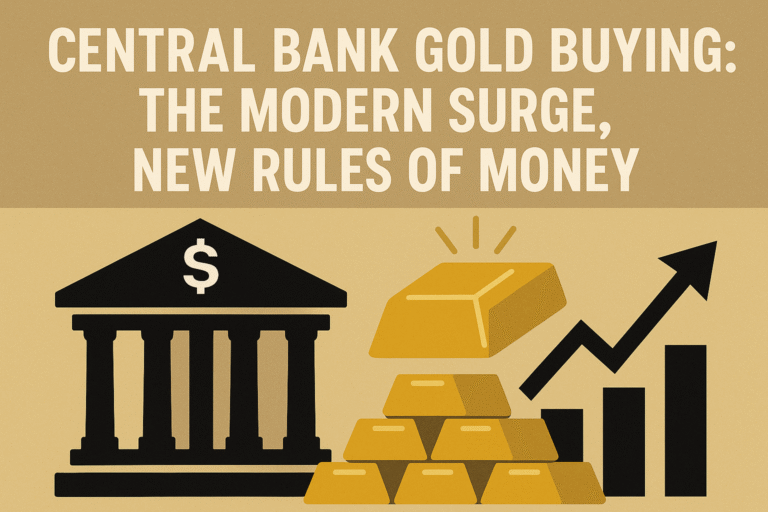Key Takeaways:
- Building SWIFT Alternatives: A core part of the post-dollar infrastructure involves creating new payment systems, like China’s CIPS and the developing “BRICS Pay,” to process transactions outside the SWIFT network.
- The Rise of Local Currency Trade: Nations are increasingly settling trade in their own local currencies, a key de-dollarization tactic designed to bypass the U.S. dollar and increase their economic sovereignty.
- The Frontier of Digital Currencies (CBDCs): Central Bank Digital Currencies are a critical building block, offering a way to streamline cross-border payments and further reduce reliance on traditional banking networks.
- De-Dollarization is Now Infrastructure: The “Rio Reset” movement is moving beyond theory, with these tangible projects creating the framework for a new, multipolar global financial system.
- Significant Challenges Remain: While progress is being made, building a new global financial infrastructure faces major hurdles, including system interoperability, cybersecurity, and establishing the widespread trust needed to compete with the current system.
Affiliate Disclosure: To support our mission of providing valuable financial analysis, this page may contain affiliate links. If you follow a link and make a purchase, we may earn a commission at no additional cost to you. We only recommend partners we thoroughly research and trust.
Read Our Article: Rio Reset Dollar Shakedown
 Is Gold Your Retirement Shield?
Is Gold Your Retirement Shield?
Introduction
The “Rio Reset” isn’t just a theoretical discussion about de-dollarization. It’s underpinned by tangible efforts to build the actual highways and byways of a new global financial system. As nations explore a future less reliant on the U.S. dollar, the critical question becomes.
What does a Post-Dollar Financial Infrastructure look like? From alternative payment messaging systems to the expanding use of local currencies and the rise of digital finance. The building blocks are quietly being assembled, potentially reshaping how international trade and investment flow.
Alternative Payment Rails
A key component of any Post-Dollar Financial Infrastructure is the development of payment systems. These are intended to operate independently of traditional, Western-led networks like SWIFT. Nations like China have been developing their Cross-Border Interbank Payment System (CIPS) to facilitate yuan-denominated transactions. Similarly, Russia has its System for Transfer of Financial Messages (SPFS).
The BRICS bloc itself is reportedly working on “BRICS Pay,” envisioned as a decentralized system, possibly utilizing blockchain. This will allow member states to transact directly using their national currencies.
Affiliate Disclosure: To support our mission of providing valuable financial analysis, this page may contain affiliate links. If you follow a link and make a purchase, we may earn a commission at no additional cost to you. We only recommend partners we thoroughly research and trust.
Embracing Local Currencies and Digital Solutions
Beyond new messaging systems, a crucial element of the emerging Post-Dollar Financial Infrastructure is the increased emphasis on bilateral trade. Countries can settle these transactions in local currencies, reducing the need for U.S. dollar intermediation.
Currency swap lines between central banks often support this process. In addition, many nations—including several BRICS members—are actively exploring and developing Central Bank Digital Currencies (CBDCs). These digital forms of fiat currency could streamline cross-border payments and further facilitate direct trade. Without relying on traditional correspondent banking networks.
Challenges on the Horizon
Building a new global financial infrastructure is not without significant hurdles. Issues of interoperability between disparate national systems, ensuring robust cybersecurity, and establishing widespread trust and adoption. All while navigating complex international regulations is a formidable challenge that any Post-Dollar Financial Infrastructure must overcome.
Frequently Asked Questions: Post-Dollar Financial Infrastructure
When will the post-dollar financial system become fully operational?
There’s no single timeline, as this transition is happening gradually across different regions and systems. China’s CIPS has been operational since 2015 and continues expanding, while BRICS Pay is still in development. Most experts suggest we’re looking at a 10-20 year transition period rather than an overnight change. The process will likely be incremental, with certain regions adopting alternative systems faster than others.
Will my US dollar savings become worthless?
No, the US dollar won’t become worthless, but its purchasing power and global dominance may gradually decline. The dollar will likely remain important for decades, but diversification into other assets and currencies may become more valuable. This is why many financial advisors recommend portfolio diversification rather than panic-driven decisions.
How will this affect my everyday purchases and banking?
For most Americans, day-to-day banking and purchases will remain largely unchanged in the near term. The US dollar will continue to be the domestic currency. However, you might eventually see more international transaction fees, different exchange rates when traveling, and potentially higher costs for imported goods as the dollar’s global purchasing power shifts.
Which countries are leading the move away from the dollar?
Beyond the BRICS nations (Brazil, Russia, India, China, South Africa), countries like Iran, Venezuela, Turkey, and several Middle Eastern oil producers are actively reducing dollar dependence. Even some US allies, including France and Germany, have expressed interest in reducing dollar reliance for certain transactions, particularly after seeing how sanctions can weaponize the dollar.
Should I convert my investments to foreign currencies or gold?
This depends on your individual financial situation, risk tolerance, and timeline. Many financial advisors suggest gradual diversification rather than dramatic shifts. Consider consulting with a financial professional about portfolio allocation that might include some foreign assets, precious metals, or international stocks, but avoid making sudden, large moves based on fear.
How will US businesses that trade internationally be affected?
US businesses may face increased complexity and costs when trading with countries that prefer alternative payment systems. They might need to hold multiple currencies, use different payment rails, or work with new financial intermediaries. However, the large scale of the US economy means the dollar will remain important for international business for the foreseeable future.
What happens to countries that rely heavily on US dollar reserves?
Countries with large dollar reserves face a balancing act. They can’t dump dollars quickly without harming their own economies, but they’re gradually diversifying into other currencies, gold, and assets. This process typically happens slowly over years or decades to avoid market disruption.
Has anything like this happened before in history?
Yes, currency transitions have occurred throughout history. The British pound was the dominant global currency before the US dollar. However, previous transitions typically took decades and often coincided with major geopolitical shifts or wars. The current situation is unique because it’s happening during peacetime and involves coordinated efforts by multiple major economies.
Will cryptocurrency play a role in the post-dollar system?
Cryptocurrency and blockchain technology are being incorporated into some alternative payment systems, including the proposed BRICS Pay system. However, most central banks are developing their own digital currencies (CBDCs) rather than adopting existing cryptocurrencies. Bitcoin and other cryptocurrencies may serve as alternative stores of value but are unlikely to become primary international settlement currencies.
What are the biggest risks if this transition fails or succeeds?
If it succeeds: The US could lose some economic privileges that come with dollar dominance, potentially leading to higher borrowing costs and reduced influence in global finance. However, it could also lead to a more stable, multipolar financial system.
If it fails: Countries attempting the transition could face economic instability, and the dollar’s dominance could become even more entrenched, potentially leading to greater geopolitical tensions and continued financial system vulnerabilities.
Conclusion
The efforts to construct a Post-Dollar Financial Infrastructure are a clear indication of a desire among many nations for a more multipolar and resilient global financial system. Keep in mind that the U.S. dollar’s dominance will not vanish overnight. The development of alternative payment rails, the rise of local currency settlements, and the exploration of digital currencies.
They are creating new pathways for international commerce. Understanding these evolving infrastructures is crucial for anyone tracking the future of global finance. For a broader perspective on the potential shifts, see our main guide: “Rio Reset Dollar Shakedown: Is Gold Your Retirement’s Unseen Shield?”






